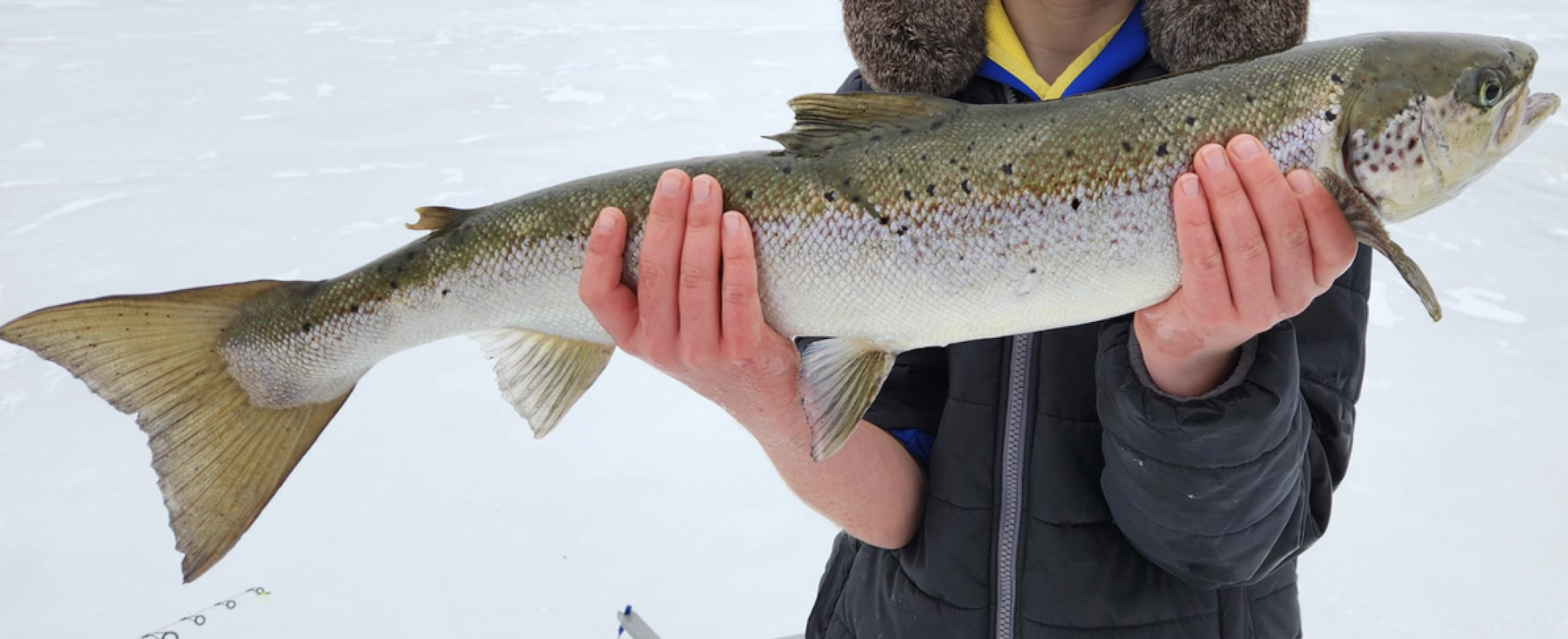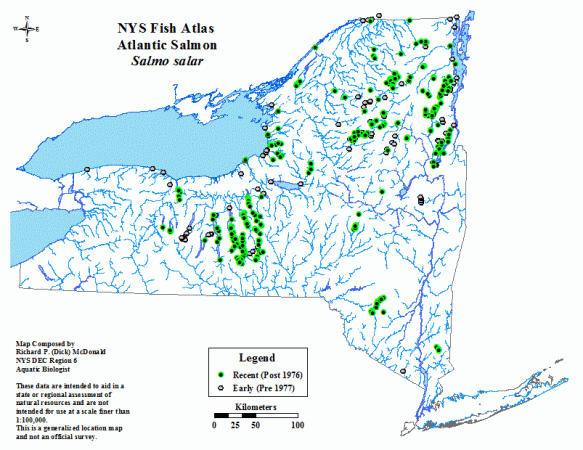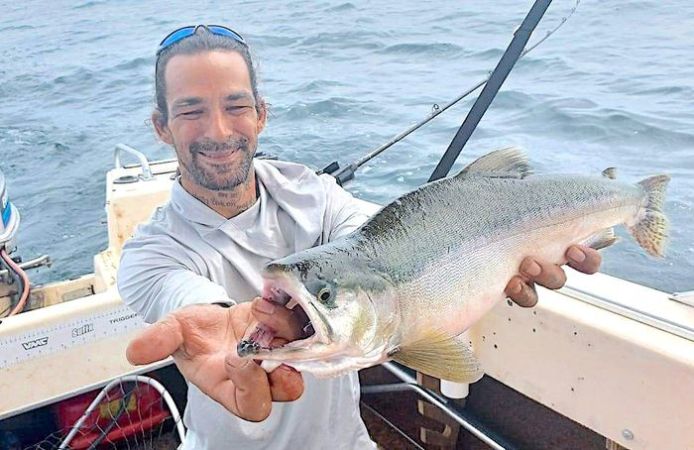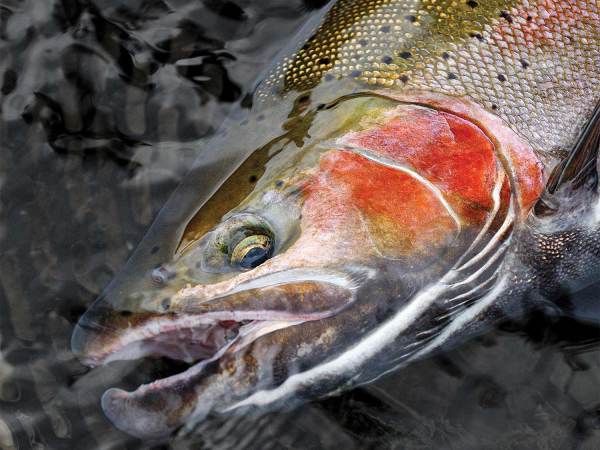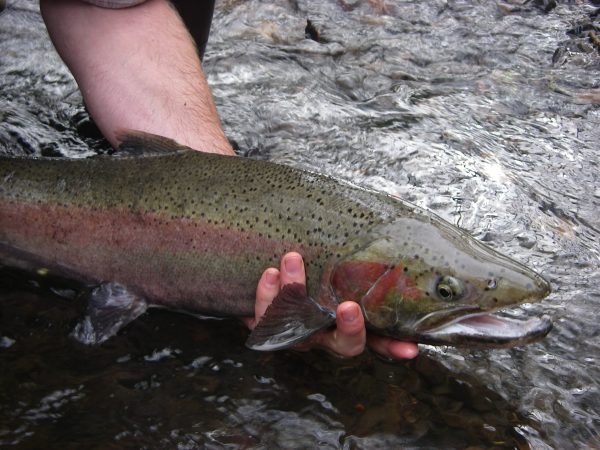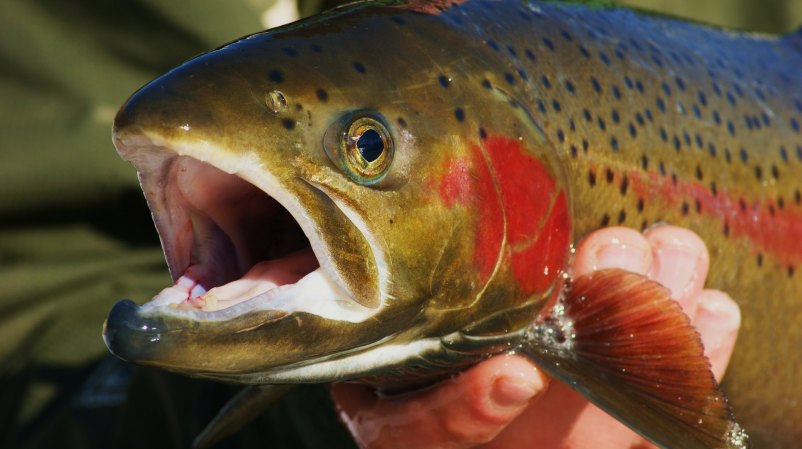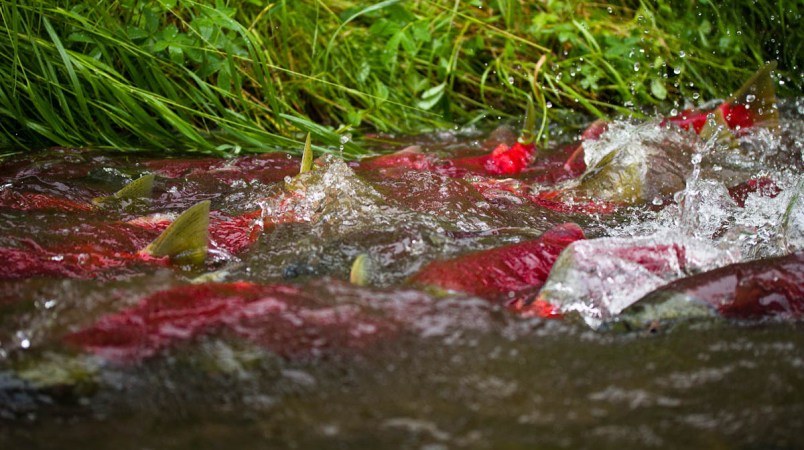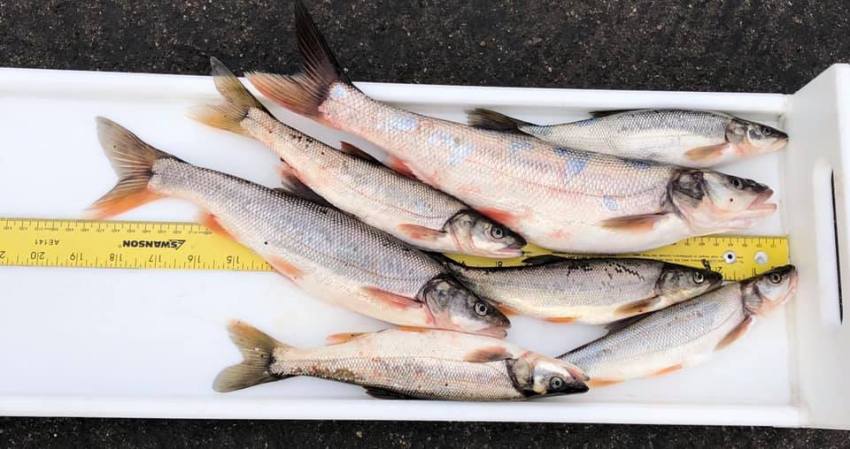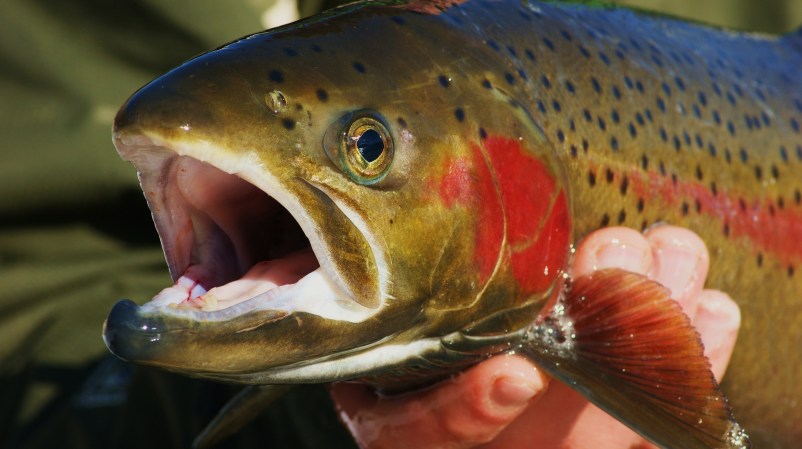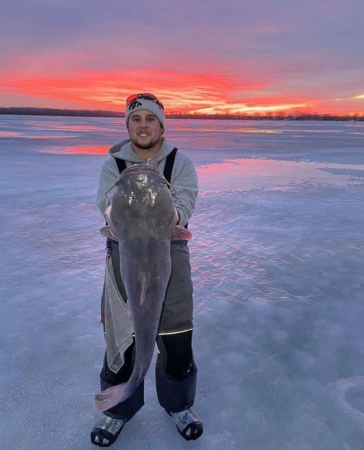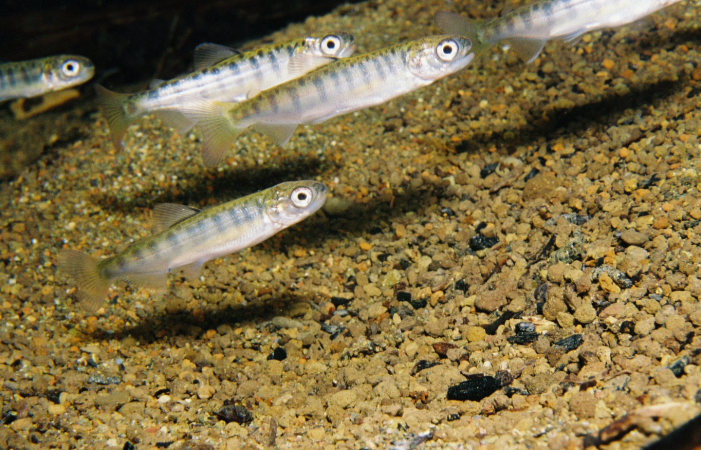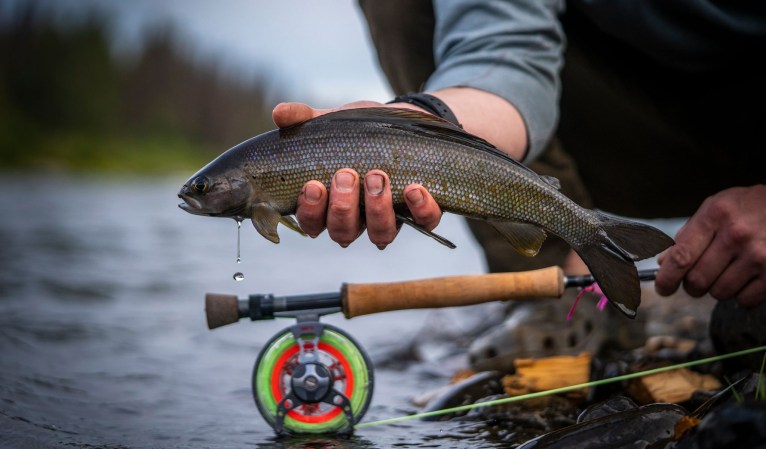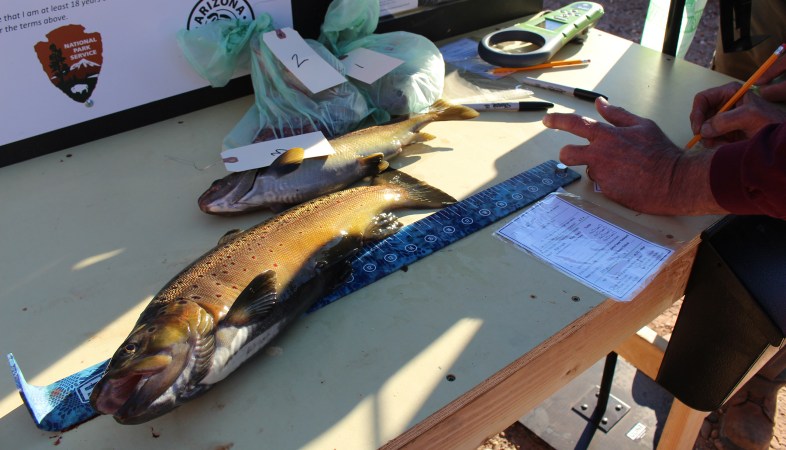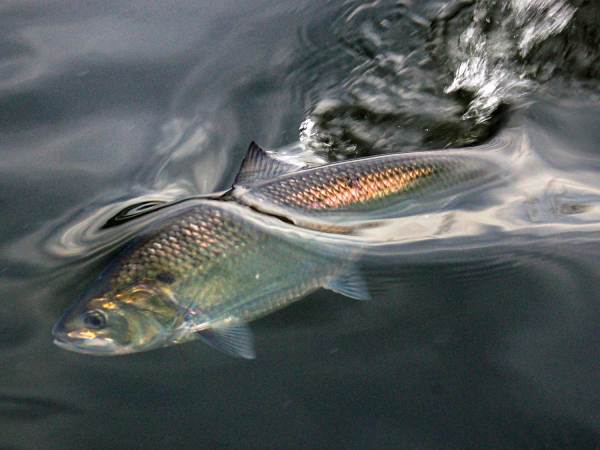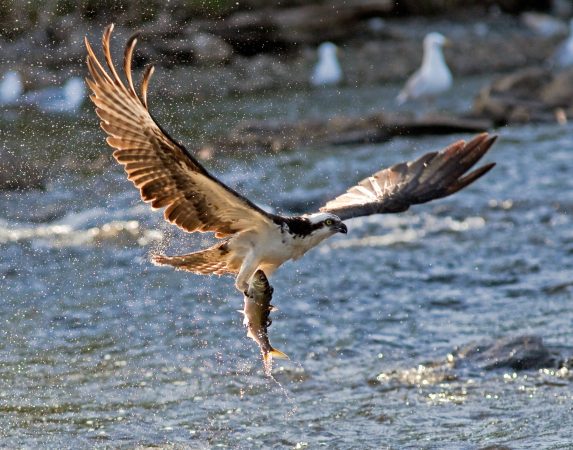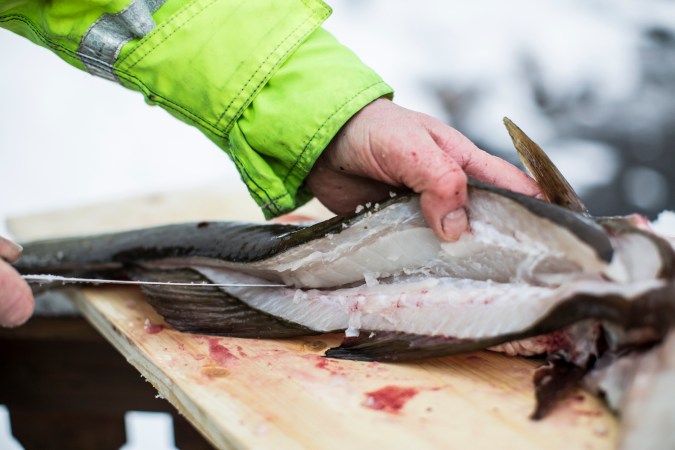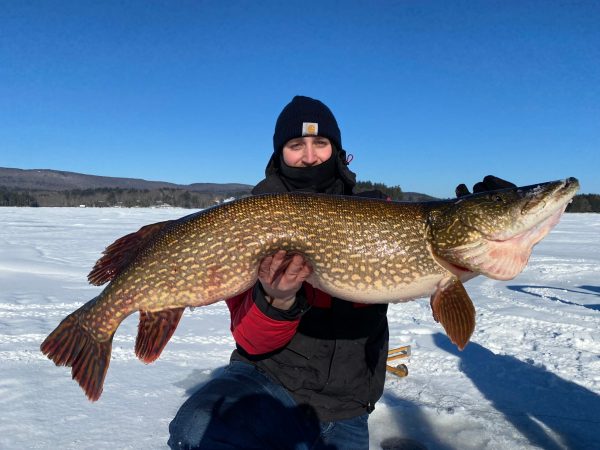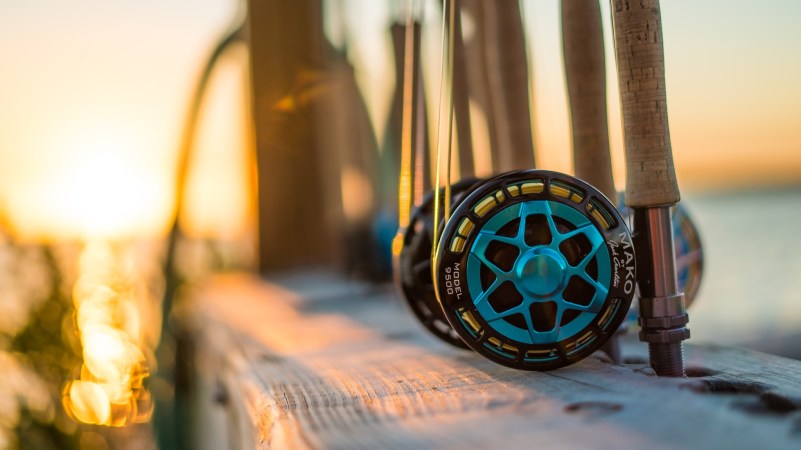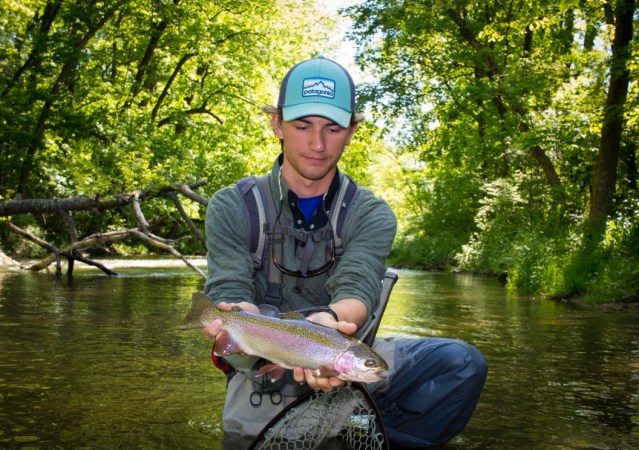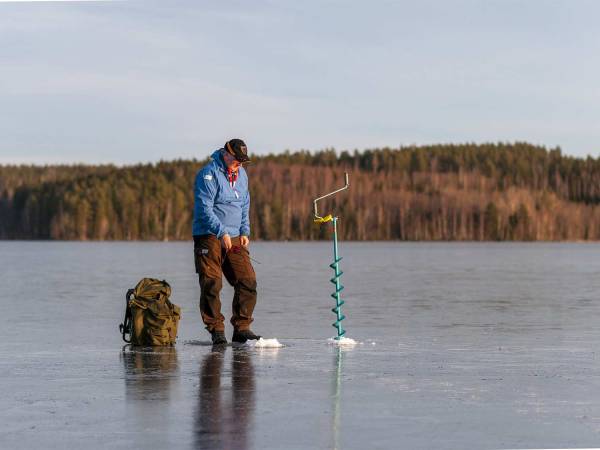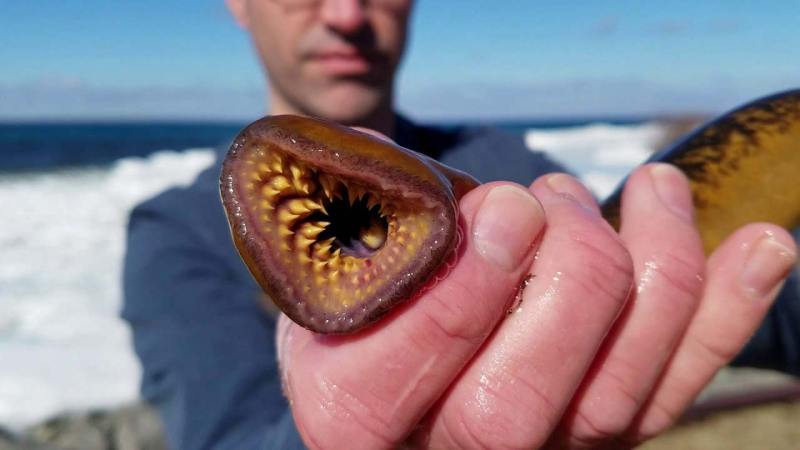Thomas Morrison, of Winterport, Maine, was fishing a lake with his son on Jan. 28 when they pulled an Atlantic salmon through the ice, according to Bangor Daily News. Thinking they’d landed a large brown trout or a landlocked salmon, Morrison shared photos of the 28-inch, five-pound fish on a Facebook group. Several members of the group then informed him that it was actually a sea-run salmon that had made its way up from the Atlantic Ocean. Fortunately, he’d already released the fish unharmed. The species is protected in Maine, which is home to the only remaining native populations of Atlantic salmon in the United States.
The biggest giveaway was the salmon’s clipped adipose fin. Fishery technicians with the Maine Department of Marine Resources cut pieces out of these fins as the sea-run fish are counted on their way upriver. This helps anglers distinguish them from other salmonids. The agency confirmed the species that Morrison had caught through the ice, and said that this sort of thing only happens about once every two years.
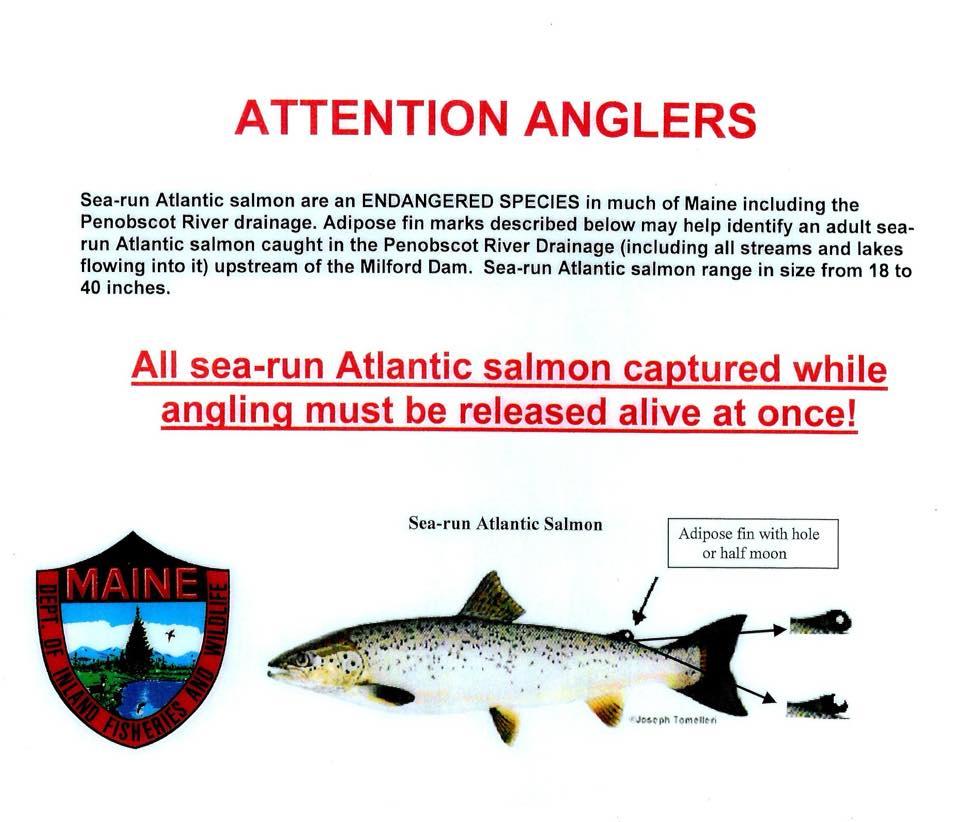
“Based on the photo and the size indicated, it appears to be a sea-run Atlantic salmon that has spent multiple winters at sea versus a grilse, which would have spent only one winter at sea and would be smaller,” an MDMR spokesperson told the newspaper.
Morrison did not identify the body of water he was fishing on, but the spokesperson explained that even though Atlantic salmon are typically associated with rivers, they will sometimes overwinter in lakes.
Atlantics were historically abundant along the Eastern seaboard, but these anadromous runs crashed during the early 20th century because of dams, pollution, and overfishing. Most rivers on the East Coast were closed to salmon fishing by around 1950, according to NOAA Fisheries, and the fish were given federal protections under the Endangered Species Act in 2000.
Read Next: New York State Is Rearing 26,000 Atlantic Salmon Smolts in Net Pens to Help Them Spawn as Adults
The Penobscot River was once the epicenter of Atlantic salmon fishing in the Pine Tree State, and it’s estimated that around 100,000 of these fish used to make their spawning migration up the river each year. While the modern-day run is a shadow of its former self, the fish have been able to return recently thanks to a historic dam removal project in 2012. The MDMR counted roughly 1,325 Atlantic salmon during the 2022 run up the Penobscot, which represents the second-highest return in the time since those dams were removed.
Because their recovery is slow and ongoing, Maine regulations strictly prohibit the retention of sea-run Atlantic salmon. As Morrison learned last month, this can cause confusion since the state’s inland lakes are also home to landlocked salmon and brown trout. The three species can look similar to one another, which is why the MDMR stresses that if an angler catches a fish and is unsure of the species, it’s best to do as Morrison did and release it at once.

